Solar control glass
Let natural light in, while reflecting the sun's heat
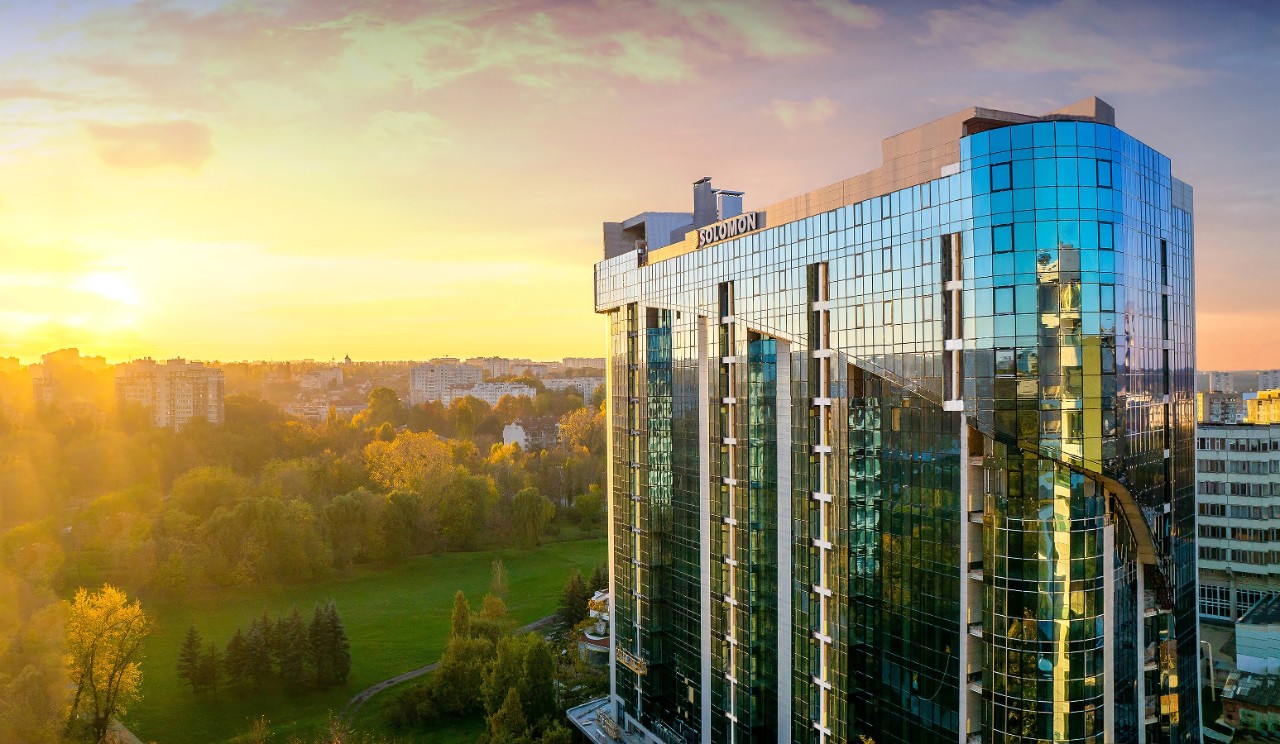
Excess heat and glare caused by the solar energy from the sun can be a major source of discomfort in some indoor environments, especially those with glass roofs, glazed facades, conservatories or with large areas of glazing. Solar control glass is ideal for helping to maximize natural daylight while reflecting a high proportion of solar radiation away from the glass, contributing to keeping the indoor space bright but cool.
What are the benefits of solar control glass?
Solar control
Summer months can be very hot, which means keeping the inside of a building comfortable while allowing natural daylight in can be a challenge. The special properties of solar control glass let natural daylight in, while reflecting a high proportion of the sun’s heat. The indoor space remains bright but cooler compared to uncoated glass.
Thermal insulation
In terms of thermal insulation performance, most of our solar control glass products - those with at least one silver coating, help reflect indoor heat back into the room and form a shield against the cold exterior. Used in double or triple glazing, they help reduce energy costs associated with indoor heating systems.
Energy saving
The energy efficiency of buildings can be improved as solar control glass helps limit the overheating of interiors through the glazing, therefore helping to reduce demands on air conditioning.
Glare reduction
Solar control glass can help mitigate glare from the sun and increase the visual comfort of building occupants, particularly if a glazed façade is directly exposed to the sun and with a high window-to-wall ratio.
Our solar control product range:
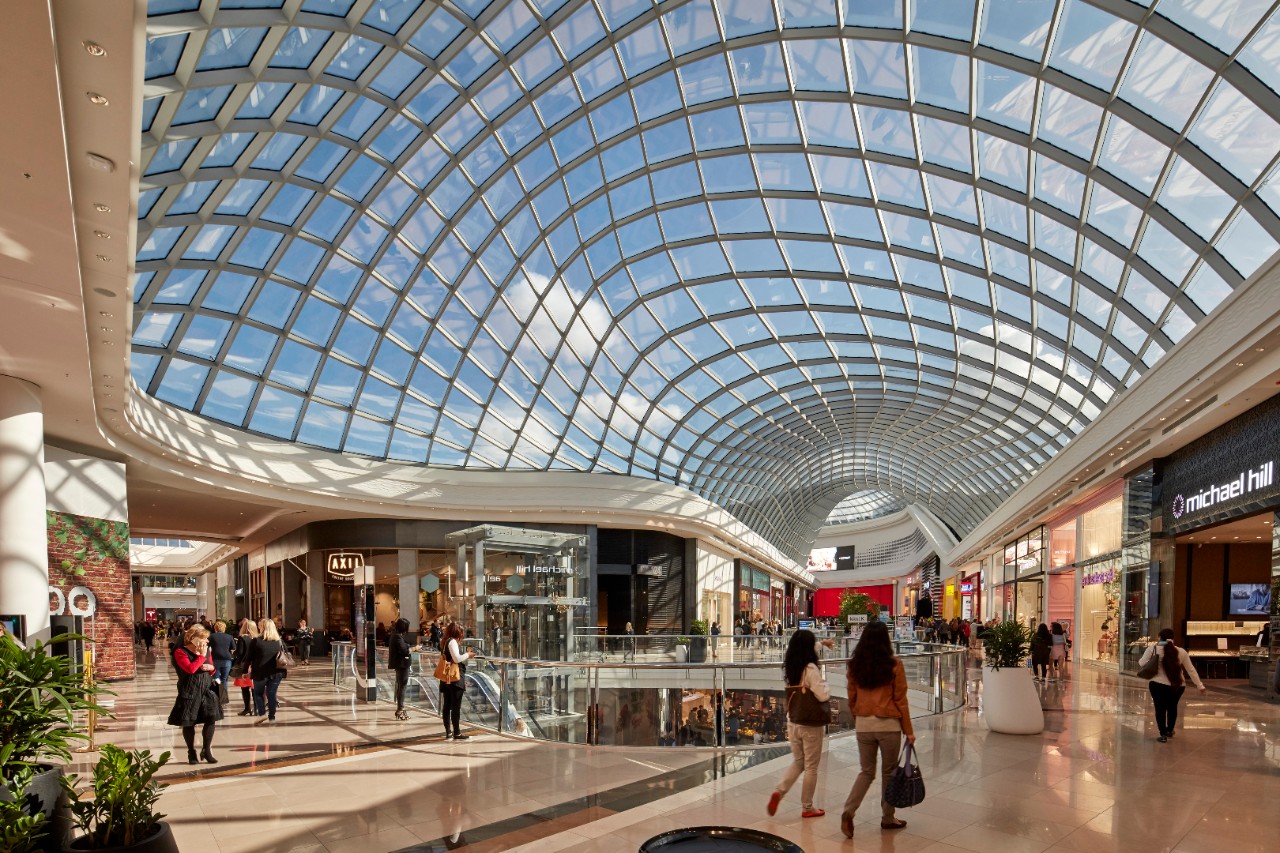
Guardian SunGuard®
Our Guardian SunGuard glass products offer different levels of solar control and light transmission, and various aesthetic options to suit many applications.
Let natural daylight in, while reflecting a high proportion of the sun's heat
Solar reflecting coating
Solar control performance is achieved through the use of a very thin, transparent, and permanent coating that helps limit the solar energy entering inside. It helps control solar gain to various levels depending on the coating while allowing natural daylight in and views on the outside. See more about how glass is coated.
How is solar control measured? Solar Heat Gain or ‘g’ value
The Solar Heat Gain Coefficient (SHGC), which is a measure of a window’s ability to transmit solar energy into a room, is measured in values from 0 to 1. The SHGC is commonly referred to as the g-value, or solar factor. The lower a window’s g-value, the greater its ability to insulate against solar heat build up.
Light to Solar Heat Gain (LSHG) or selectivity
The term “Light to Solar Heat Gain”, or “spectral selectivity” is used to address the amount of light transmission relative to solar energy blockage. Greater spectral selectivity is achieved when more visible light, and less overall solar energy, is transmitted.
Insulated glass unit (IGU)
Solar control is typically used in a double or triple insulating glass unit (IGU), which allows the energy efficiency of the windows to be further improved and helping to make building occupants feel more comfortable. The number 2 surface placement of a solar control coating often facilitates the best solar control performance because it partially reflects away incoming solar energy before it can enter the glazing. Some of our products can also be used for monolithic applications due to the durability of their coating.

Aesthetics: a variety of colors and levels of reflectivity
Our solar control glass is applied on clear float glass and has a neutral aspect, allowing more natural, truer views through the glass. However, if you wish, solar control glass can also be colored. Our solar control coatings can be applied on tinted glass to further help mitigate glare and solar heat gain. Tinted glass colors can range from blue to grey with different contrasts. Solar control glass can also have different levels of reflectivity to provide transparency or a more reflective, almost mirrored glass effect, as well as a changing appearance during the day, to meet your aesthetic needs.
Specifying solar control glass to help meet project needs
There are many products available to choose from. As well as a wide range of aesthetic options, solar control glass can have various levels of energy performance and light transmission. Depending on the climate and the orientation of the building and its surroundings, carefully selecting the glass in the early stages of the project can help optimize the impact of the glazing on the overall energy performance of the building. Guardian™ Glass for BIM (Building Information Modeling) is an Autodesk Revit application for selecting and specifying Guardian Glass products. The software provides key performance metrics (passive solar heat gain, natural daylight, thermal) for all glass types.

Want to know more about glass and its properties?
Guardian™ Glass offers you a wealth of technical notes, tools and online learning to enhance your knowledge about glass and help you specify the most appropriate glass for your project. Discover our BIM resources and specification tools on the Resource Hub!

Applications and uses of solar control glass
The applications for solar control glass are wide-ranging. From windows, facades and curtain walls to roofs and skylights, in fact, any application where glazing is a physical barrier between the inside and outside of a building, solar control glazing can be considered.
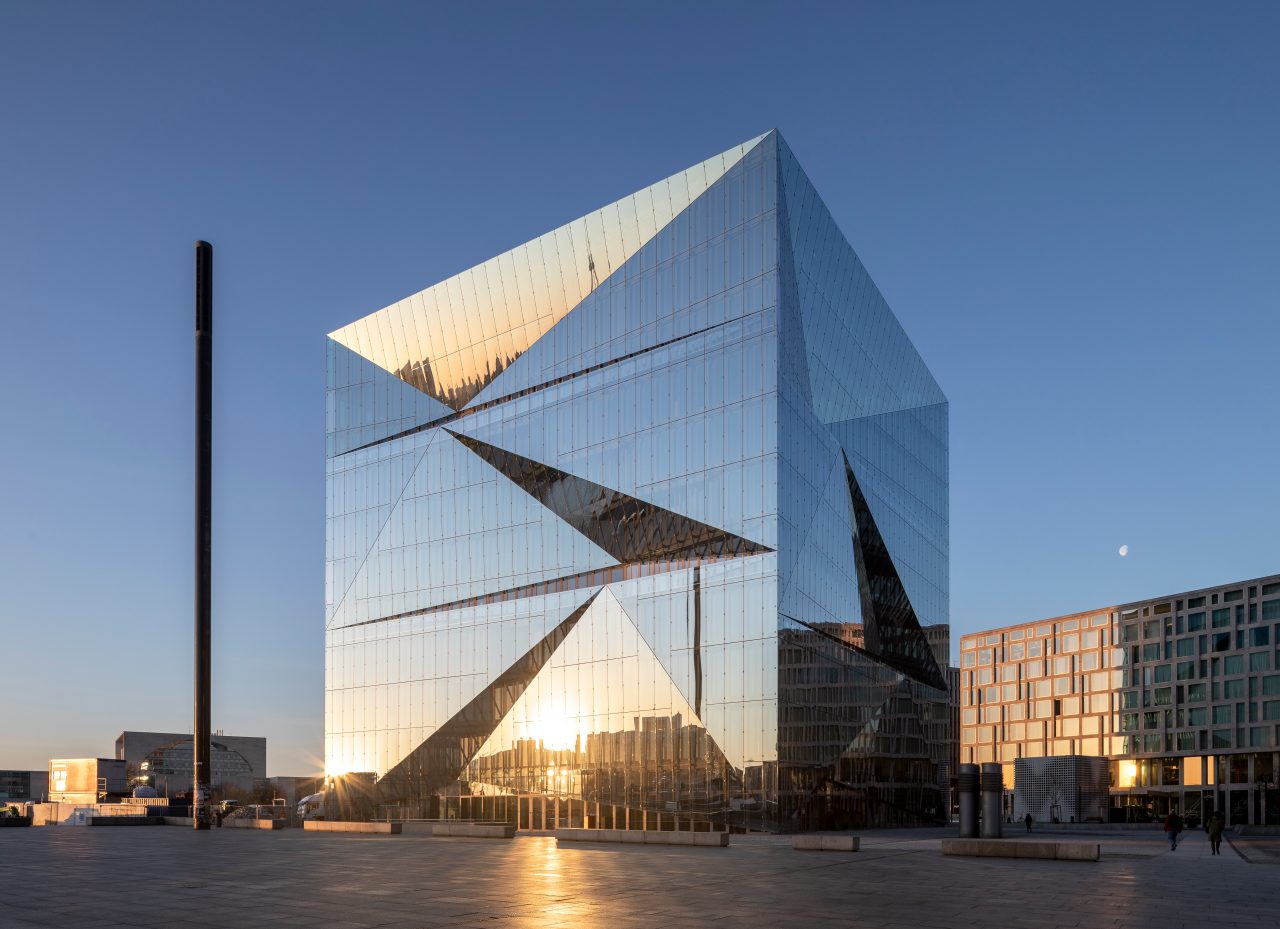
Curtain walls
A curtain wall is a non-structural outer covering of a building that can be made of glass. Using solar control glass in a curtain wall can help designers control the performance and appearance of the glazing, including solar protection and thermal insulation.
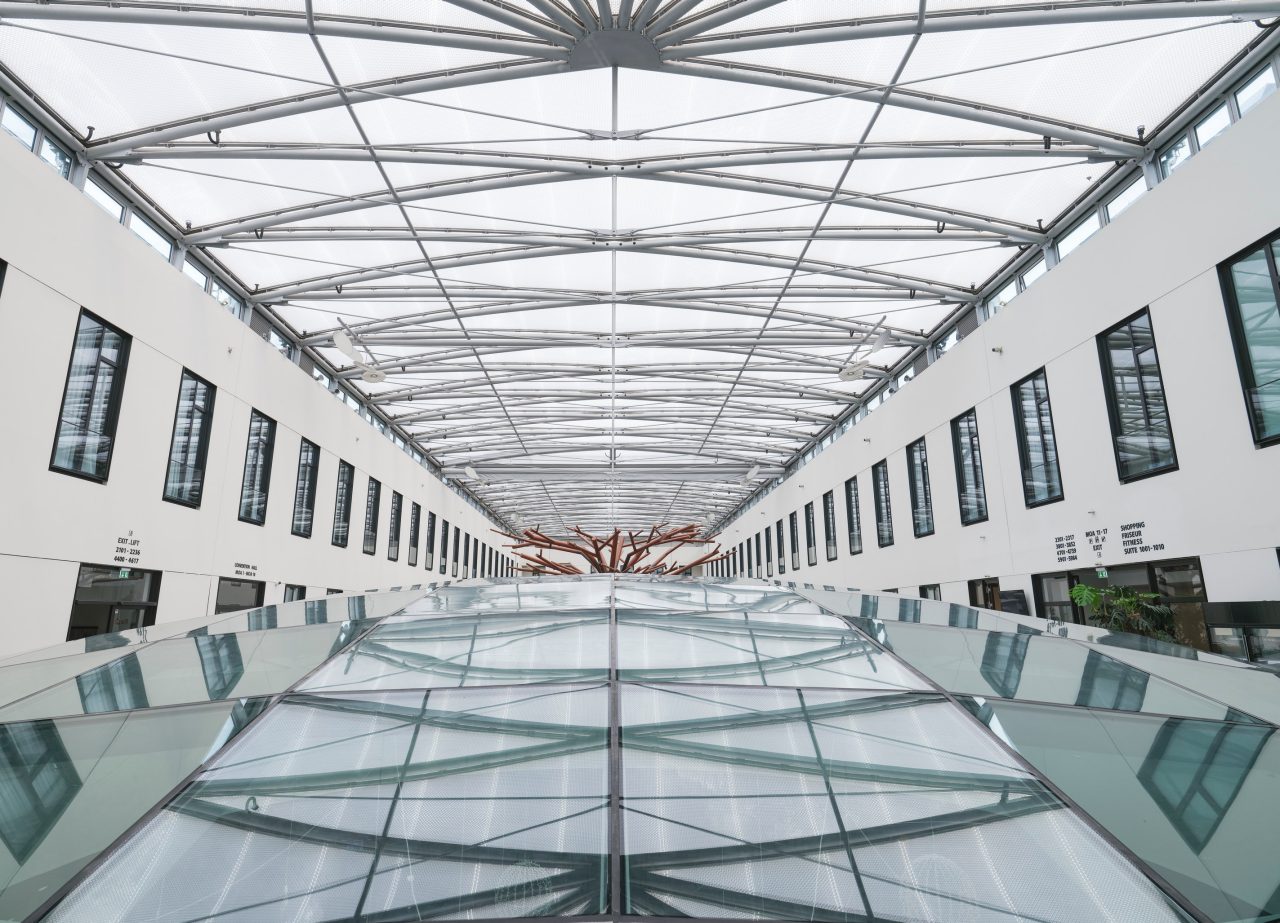
Roofs and skylights
Overhead glazing such as roof glazing can help reduce the need for artificial lighting, as well as provide a natural source of daylight to help brighten and open up the interior spaces of a building. Solar control glass can help address both solar protection and thermal insulation needs.
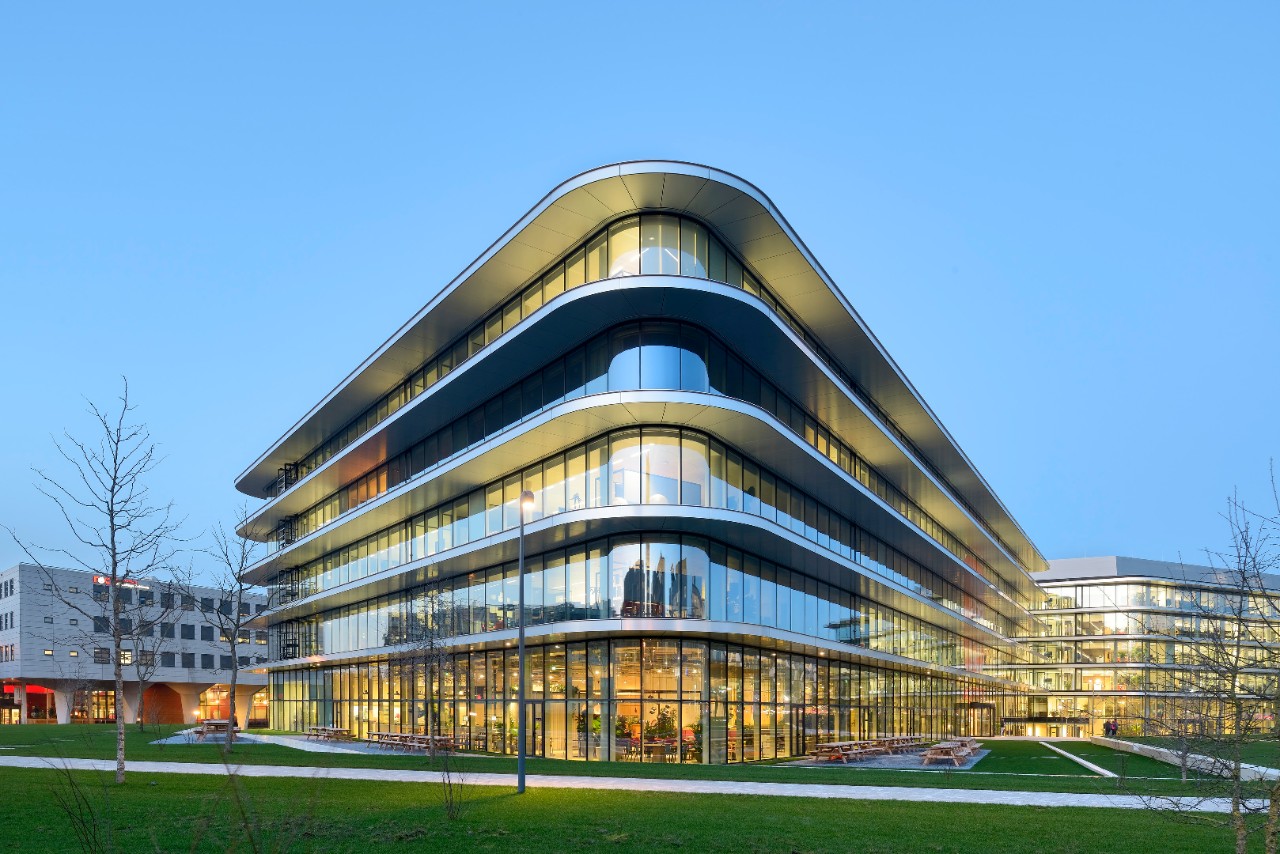
Curved glazing
Solar control glass solutions have been developed that withstand the bending process without affecting the visual appearance of the glass. These solutions open up new design possibilities while still providing the required solar and thermal performance to contribute to the energy efficiency of the building.

Oversized glazing
Oversized solar control glass provides opportunities for designers to create unique, striking designs. Using large panels of solar control glass can help minimize the use of structural elements, while creating a seamless façade that allows more natural daylight into buildings and provides spectacular views for occupants to enjoy.
Some of our eye-catching projects made possible thanks to Guardian solar control glass
Want to see more architectural projects made with glass for glare control? Visit our project section.
Combining solar control glass with other glass types in an insulated glass unit?
Solar control glass can be combined in an IGU with thermal insulating glass to further improve the thermal insulation performance and help keep temperatures comfortable for the building’s occupants all year round. It can also be combined with laminated glass to provide safety and security features, as well as sound reduction.
Our solar control product solutions :
Need to compare the performance of our products? Visit our product section to search, compare and filter through our wide range of glass solutions
-

SunGuard™ SNX 62/27
SNX 62/27 is a high-performance, triple-silver solar control glass offering an ideal balance of natural light and solar energy control.
See more -

SunGuard™ SNX 51/23
SNX 51/23 is a high-performance, triple-silver solar control glass offering an ideal balance of natural light and solar energy control.
See more -

SunGuard™ SNR 50
SNR 50 offers high light transmission and solar protection, helping to reduce lighting, cooling, and heating needs.
See more -

SunGuard™ SNR 35
SNR 35 offers high light transmission and solar protection, helping to reduce lighting, cooling, and heating needs.
See more -

SunGuard™ SNR 43
SNR 43 offers high light transmission and solar protection, helping to reduce lighting, cooling, and heating needs.
See more -

SunGuard™ SNE 50
SNE 50 offers high light transmission and solar protection, helping to reduce lighting, cooling, and heating needs.
See more -

SunGuard™ SN 54
SN 54 offers high light transmission and solar protection, helping to reduce lighting, cooling, and heating needs.
See more -

SunGuard® SNX 70+
SNX 70 Plus is a high-performance, triple-silver solar control glass offering an ideal balance of natural light and solar energy control.
See more


